Vous vous engagez de votre propre initiative dans la recherche de cette cache à vos risques et périls. Je décline donc toute responsabilité en cas de problème.
Il s'agit d'une Earthcache, il n'y a pas de récipient à chercher, mais il faut répondre par écrit aux questions à la fin du descriptif.
Fontaines Marta Pan
La rue de Siam à Brest a été détruite pendant la guerre. Sept fontaines noires y ont étés installés en 1988. Elles sont dues à l’architecte hongroise Marta Pan, qui invite les spectateurs à la réflexion autour des sept péchés capitaux. Les fontaines sont sculptées en gabbro de Johannesbourg (Afrique du sud). Le sol est traité en dalles de granite rouge de La Clarté qui contraste avec le granite gris de Huelgoat des galeries marchandes. Le passage du tramway a bien sûr respecté le site, en accord avec l’architecte des Bâtiments de France, contournant les fontaines, et le béton désactivé de la plateforme utilise un agrégat de ce granite rouge pour une bonne intégration.
Roches magmatiques
Les roches magmatiques se forment quand un magma se refroidit et se solidifie, avec ou sans cristallisation complète des minéraux le composant. Cette solidification peut se produire soit lentement en profondeur, ce qui est le cas des roches magmatiques plutoniques; soit rapidement à la surface dans le cas des roches magmatiques volcaniques.
Granite
C’est une roche plutonique à texture grenue. La composition minéralogique classique pour un granite est quartz, feldspaths (orthoses et plagioclases), micas (muscovite et biotite). Le granite est le résultat du refroidissement lent, en profondeur, de grandes masses de magma intrusif qui formeront le plus souvent des plutons. On peut les observer à la surface grâce à l'érosion qui décape les roches sus-jacentes. Ces magmas acides (c'est-à-dire relativement riches en silice) sont essentiellement le résultat de la fusion partielle de la croûte terrestre continentale.
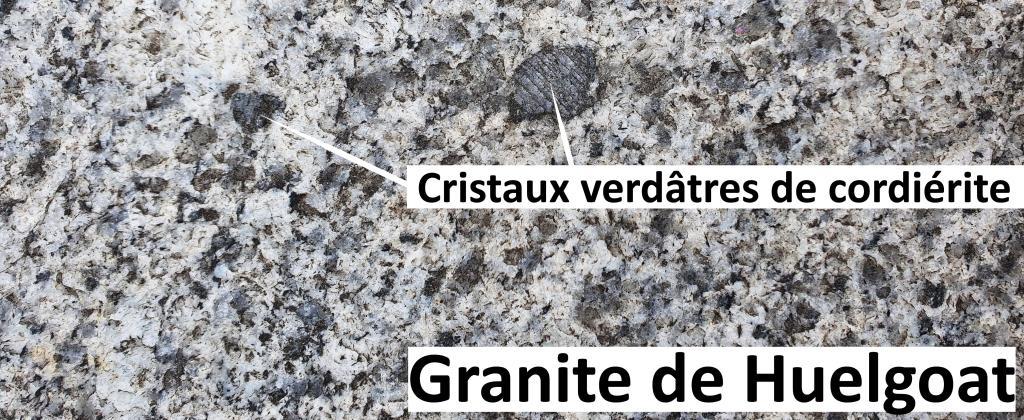
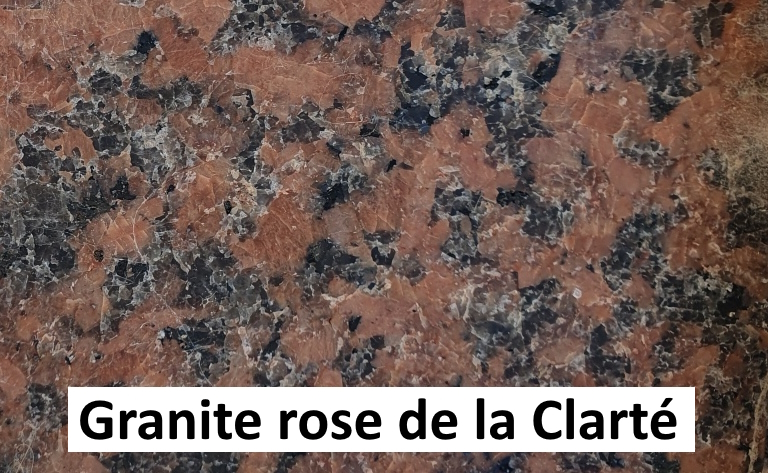
Gabbro
Le gabbro est une roche plutonique à texture grenue, composée essentiellement de pyroxène et de feldspath. Le gabbro est le constituant principal de la couche inférieure de la croûte océanique. On le trouve ailleurs que sur la Terre, le gabbro compose ainsi une partie des roches de la surface de la Lune. Cette roche est issue de la fusion partielle de la péridotite mantellique au niveau de cette zone ayant subi, contrairement au basalte, un refroidissement lent en profondeur, donc une cristallisation complète (on note la présence de phénocristaux). Les roches volcaniques correspondantes sont les basaltes ayant subi une cristallisation très rapide en surface. Basaltes et gabbros forment la croûte océanique. Un gabbro est une roche à structure grenue de couleur dominante verte à noire. Il est composé de pyroxène, d'amphibole et d'olivine, lui conférant cette teinte sombre, et de plagioclase.

Gabbro
Roches métamorphiques
Une roche métamorphique est un type de roches dont la formation a pour origine la transformation à l'état solide des roches sédimentaires, magmatiques ou encore métamorphiques dans un régime de contraintes au cours d'un temps long, en raison des modifications des paramètres physico-chimiques du milieu dans lequel elles évoluent (notamment la pression, la température et la teneur en eau). Cette transformation, désignée sous le terme de métamorphisme, se traduit par une modification de la texture, de l'assemblage minéralogique à l'équilibre ou de la composition chimique de la roche. La roche originelle d'une roche métamorphique est appelée le protolithe.
Marbre
Le marbre est une roche métamorphique dérivée du calcaire et constituée principalement de cristaux de calcite. Les marbres présentent une grande diversité de coloris, bien que la couleur de base de la calcite soit le blanc. On y trouve fréquemment des veines appelées marbrures. Les veines et les coloris sont généralement dus à des inclusions d'oxydes métalliques. Certains types de marbre (marbres secondaires) peuvent contenir des coquilles et autres corps marins.

Sources
Wikipédia
Jonin M. et Chauris L., 2012 - Promenade géologique à Brest. Biotope, Mèze - MNHN, Paris
Jonin et Puissant 2021, Tram Brest bull.19-SGMB.pdf
Questions pour valider cette Earthcache :
Regardez attentivement les zones A, B, C et D. Et répondez aux deux questions pour chaque occurrence.
- Observez-vous des cristaux, des marbrures, des fossiles ?
- A l’aide du descriptif essayez d’identifier la roche.
- Une photo de vous ou d’un objet vous représentant sur le site.

Loguez cette cache "Found it" et envoyez-moi vos propositions de réponses soit via mon profil, soit via la messagerie geocaching.com (Message Center), et je vous contacterai en cas de problème. Les logs enregistrés sans réponses seront supprimés.
English version
You engage in the search for this cache on your own initiative at your own risk. I therefore decline all responsibility in the event of a problem.
This is an Earthcache, there is no container to look for, but you have to answer the questions at the end of the description.
Marta Pan Fountains
Rue de Siam in Brest was destroyed during the war. Seven black fountains were installed there in 1988. They are due to the Hungarian architect Marta Pan, who invites spectators to reflect on the seven deadly sins. The fountains are sculpted in gabbro from Johannesburg (South Africa). The floor is treated with slabs of red granite from La Clarté which contrasts with the gray granite from Huelgoat in the shopping malls. The passage of the tram has of course respected the site, in agreement with the architect of the Buildings of France, bypassing the fountains, and the deactivated concrete of the platform uses an aggregate of this red granite for a good integration.
Magmatic rocks
Igneous rocks are formed when a magma cools and solidifies, with or without complete crystallization of the minerals composing it. This solidification can occur either slowly at depth, which is the case of plutonic igneous rocks; or quickly to the surface in the case of volcanic igneous rocks.
Granite
It is a plutonic rock with a grainy texture. The classic mineralogical composition for a granite is quartz, feldspar (orthoclase and plagioclase), mica (muscovite and biotite). The granite is the result of the slow cooling, at depth, of large masses of intrusive magma which will most often form plutons. They can be observed on the surface thanks to the erosion which strips the overlying rocks. These acidic magmas (that is to say relatively rich in silica) are essentially the result of the partial melting of the continental earth's crust.
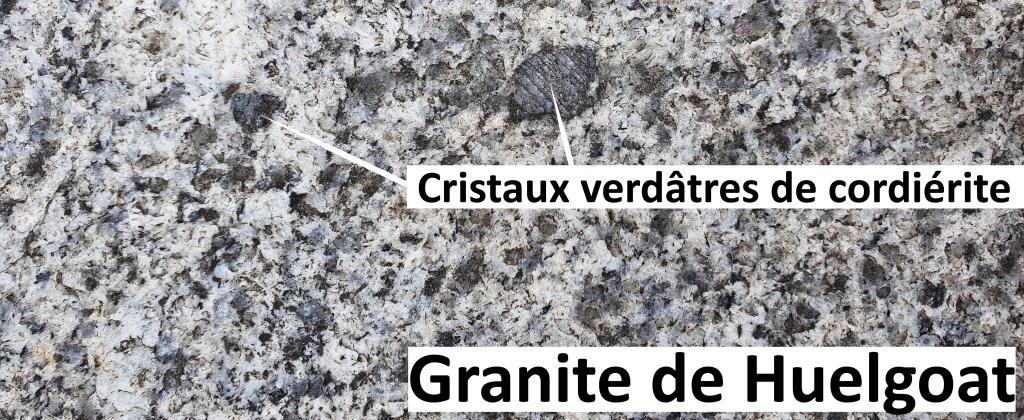
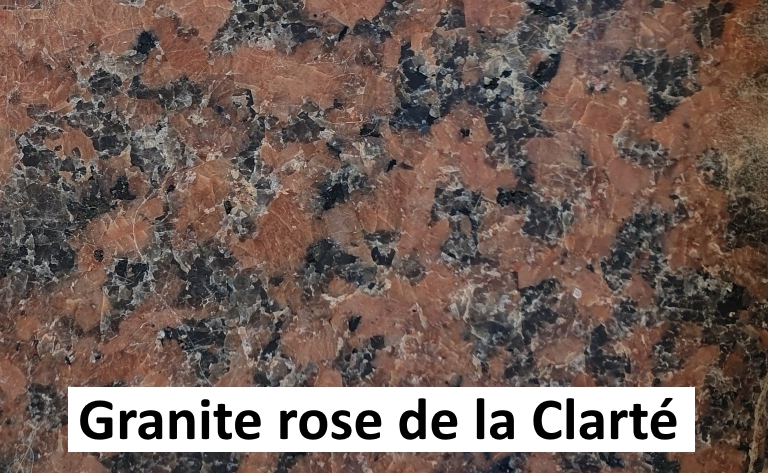
Gabbro
Gabbro is a plutonic rock with a grainy texture, composed mainly of pyroxene and feldspar. Gabbro is the main constituent of the lower layer of oceanic crust. It is found elsewhere than on Earth, gabbro thus makes up part of the rocks on the surface of the Moon. This rock comes from the partial melting of the mantle peridotite at this zone having undergone, unlike the basalt, a slow cooling in depth, therefore a complete crystallization (we note the presence of phenocrysts). The corresponding volcanic rocks are basalts that have undergone very rapid surface crystallization. Basalts and gabbros form the oceanic crust. A gabbro is a rock with a grainy structure with a dominant green to black color. It is composed of pyroxene, amphibole and olivine, giving it this dark hue, and plagioclase.
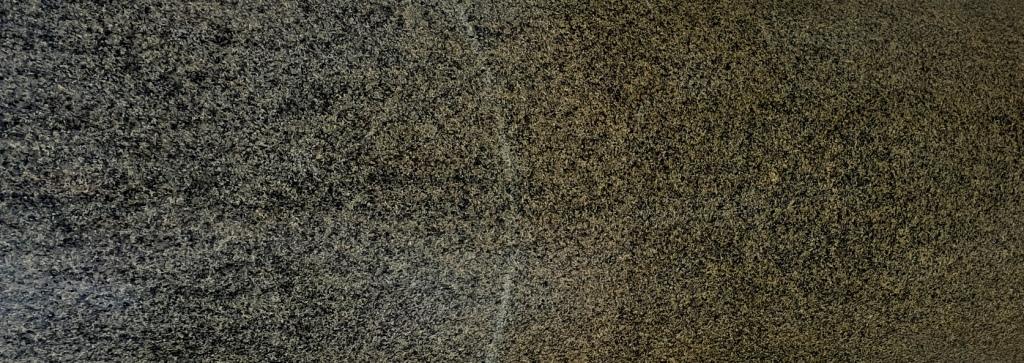
Metamorphic rocks
A metamorphic rock is a type of rock whose formation originates from the transformation into the solid state of sedimentary, magmatic or even metamorphic rocks in a stress regime over a long period of time, due to modifications of the physico-chemical parameters. environment in which they evolve (in particular the pressure, the temperature and the water content). This transformation, referred to as metamorphism, results in a modification of the texture, the mineralogical assembly at equilibrium or the chemical composition of the rock. The parent rock of a metamorphic rock is called the protolith.
Marble
Marble is a metamorphic rock derived from limestone and consisting mainly of calcite crystals. The marbles have a great diversity of colors, although the basic color of calcite is white. There are frequently veins called marbling. The veins and colors are generally due to inclusions of metallic oxides. Some types of marble (secondary marbles) may contain shells and other marine bodies.

Questions to validate this Earthcache:
Look closely at areas A, B, C, and D. And answer both questions for each occurrence.
- Do you observe crystals, marbling, fossils?
- Using the description, try to identify the rock.
- A photo of you or an object representing you on the site.
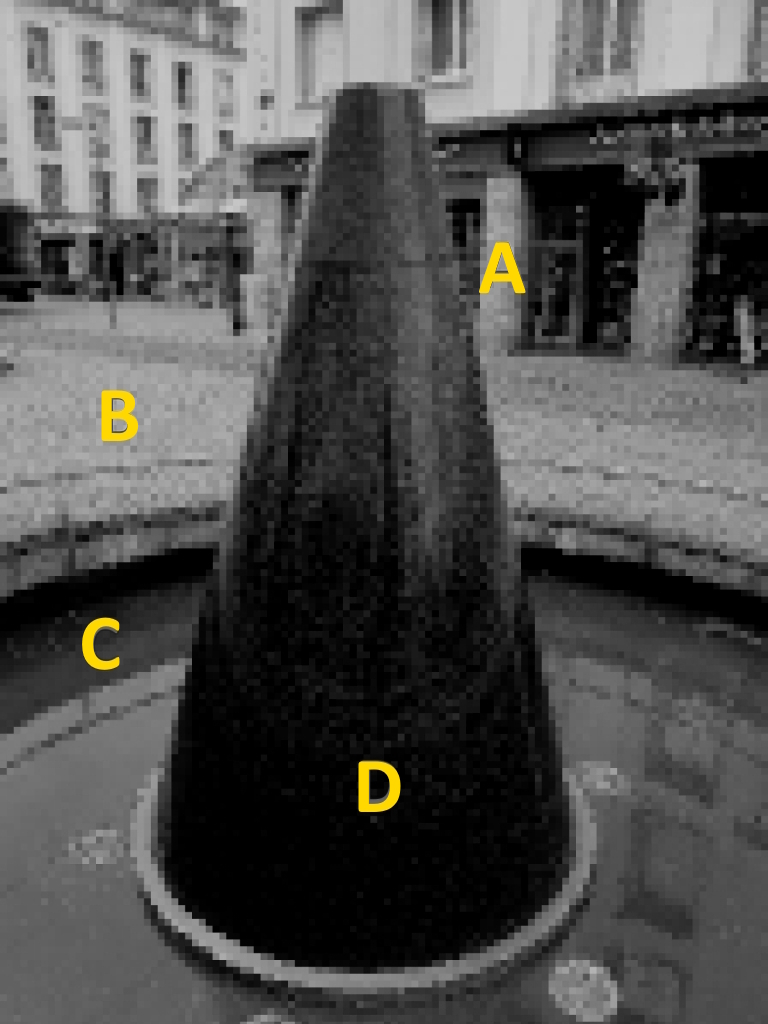
Log this "Found it" cache and send me your suggested answers either via my profile or via geocaching.com (Message Center), and I will contact you in the event of a problem. Logs recorded without response will be deleted.